
Blog / Disruptive Technologies
AI in Architecture: Boosting Design Efficiency for a Competitive Edge
Categories

Navigate the exciting intersection of architecture and technology with our comprehensive guide! Delve into the world of Artificial Intelligence (AI), an emerging cornerstone in the field of architectural design.
If being one step ahead appeals to you, or if making your designs more efficient, innovative, and sustainable sounds intriguing, this in-depth exploration of AI's benefits and applications in architecture is perfect for you.
Stay on top of your game and ensure you aren't left behind in this fast-paced technological era. Let's start the journey, and unveil the potential that AI holds for your designs and your career.
Why Should Professionals Care About AI in Architecture?
As an architect, designer or real estate management leader, you might ask yourself 'why should I care about artificial intelligence (AI) in architecture?' This is a valid question and one that merits an in-depth response. Understanding and harnessing the power of AI can dramatically transform your work, unleashing countless possibilities and refining your approach to design and execution. So, why should you, indeed, pay attention to AI in your field?
- Innovation: AI offers innovative tools that can simplify complex processes, enabling you to outpace your competition.
- Efficiency: With AI, you can drastically shorten the amount of time you spend on mundane tasks, freeing up your schedule for more creative endeavours.
- Precision: AI can reveal previously unknown insights, letting you analyse and solve design challenges with a level of precision previously unrivalled.
- Sustainability: Through smart material selection and energy optimization, AI promotes a more sustainable future in architecture.
- Competitive advantage: By embracing AI, you stand out from the crowd, making your designs stand out as more unique, innovative, and efficient.
Artificial intelligence is not just a conduit for efficiency, but a catalyst for creativity and innovation within the architectural and engineering professions. Ignoring its power would be a missed opportunity in a field that thrives on foresight and evolution.
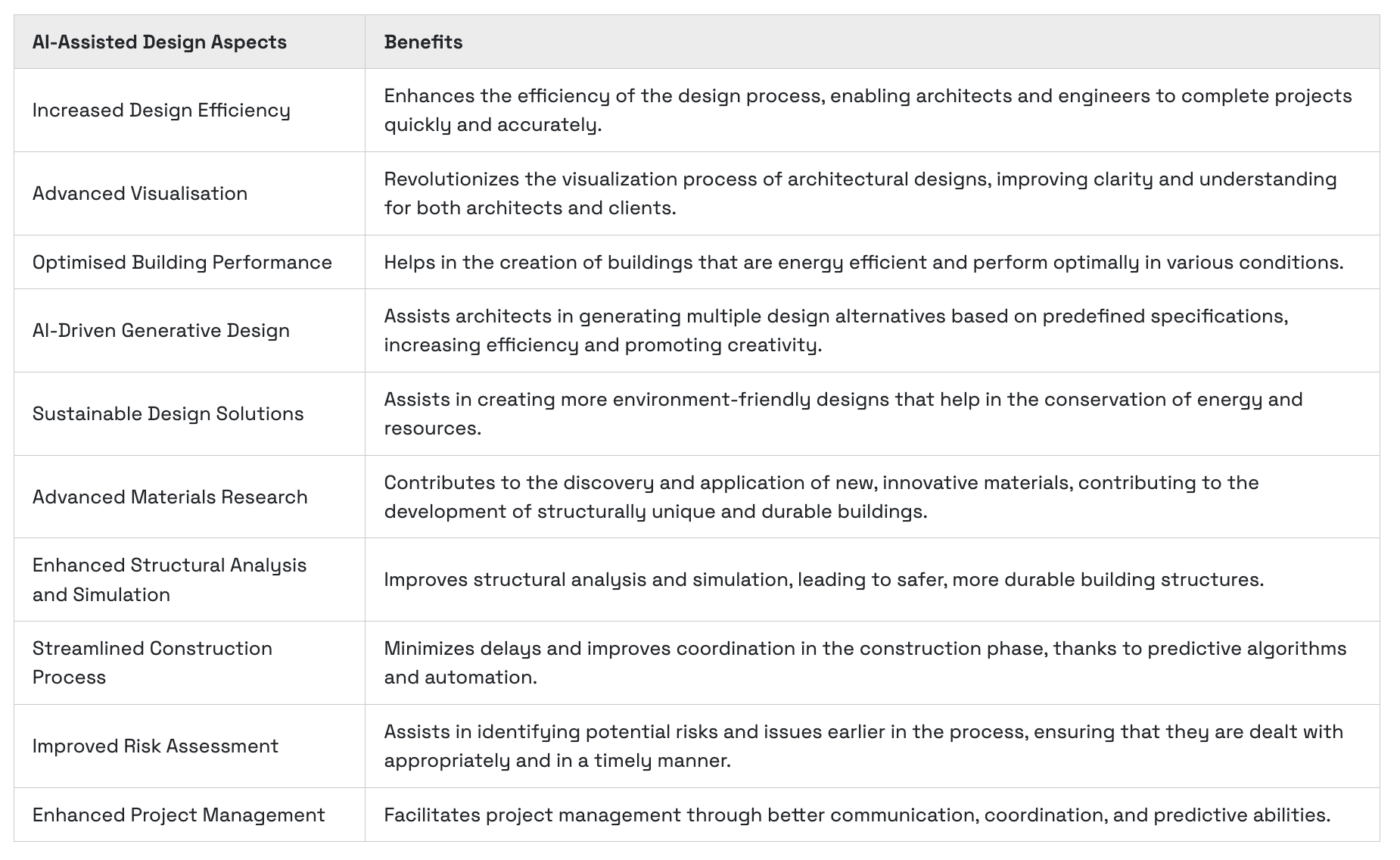
In the following sections of this article, we will delve into how AI can be applied to various aspects of the architecture and engineering fields, demonstrating the benefits that can be reaped by integrating this groundbreaking technology into your professional toolbox.
Understanding Artificial Intelligence in Architecture
Artificial Intelligence, commonly known as AI, represents the epitome of technological advancement in our epoch. This revolutionary technology is notably transforming various professional fields, among which architecture and design prominently stand out.
- AI, at its core, is a multidisciplinary approach that incorporates aspects of computer science, psychology, and sophisticated mathematics to create systems capable of learning, reasoning, problem-solving, perception, and language comprehension.
- Its implementation in the realm of architecture has led to a paradigm shift in how professionals plan, design, optimise and manage buildings and infrastructure projects.
From automating repetitive tasks to suggesting optimal design solutions based on countless factors, the applications of AI in architecture are as myriad as they are transformative.
Exploring AI Applications in the Design Process
As you delve deeper into the world of architecture and engineering, you'll discover numerous applications of AI in the design process. These applications demystify complex design conundrums, enabling you to fashion more precise, innovative, and sustainable designs. Here’s how AI comes into play:
- Automated Design Generation. Imagine if you could generate hundreds of unique design options in a fraction of the time it would ordinarily take you. This is exactly what AI can do. Integrating Generative Adversarial Networks (GANs), AI can automatically create hundreds of design solutions based on certain parameters set by you, such as building dimensions, functional spaces or energy consumption criteria. With AI taking care of the initial design prototyping, you are free to focus on other crucial aspects of your project.
- Precision Modelling. Generative Design AI can also assist in creating precise architectural models. These models factor in details like structural integrity, temperature control, light direction, or even traffic flow around the building. As such, you can leverage AI modelling to ensure that your designs are viable, eco-friendly, and aesthetically appealing.
- Real-Time Design Changes. Don't you sometimes wish you could see the impact of your design choices in real-time? AI makes this possible. AI-powered software can provide real-time feedback on your design choices, allowing you to see the effect of altering the design parameters. You can quickly try out different materials, layouts or climate efficiencies and immediately see the results on your screen.
- Intelligent Resource Management. AI can help you attain greater levels of sustainability in your designs. AI can analyse and identify potential wastage areas and suggest ways to optimise resource utilisation. Whether it's utilising sunlight more effectively or minimising heat loss, AI equips you to create designs that epitomise the principles of sustainable architecture.
In essence, integrating AI into your workflow can be a game-changer. AI not only improves your productivity and design quality but also empowers you to create sustainable solutions that can withstand the test of time.
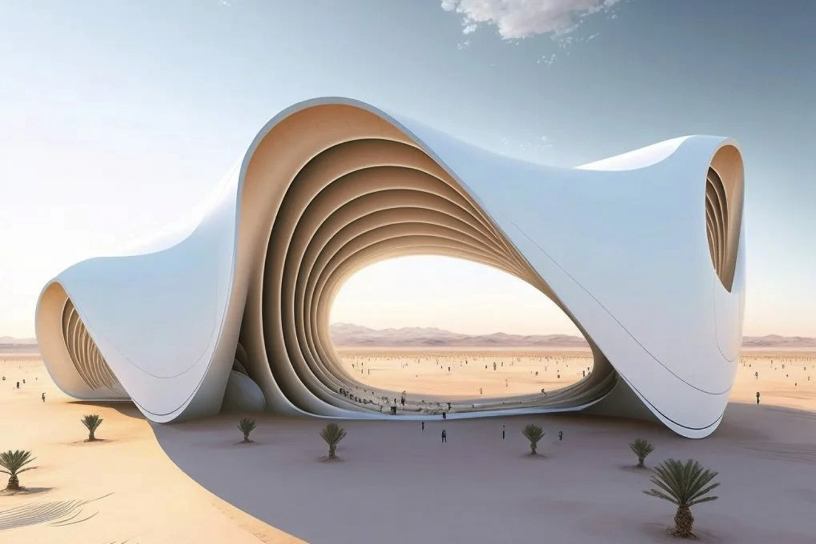
Revolutionizing Architectural Visualization with AI
Imagine being able to visualise your architectural designs with an unprecedented level of realism, unlike anything that's been possible before - that's exactly what AI brings to the table in the world of architectural design. By integrating AI technology with visualization tools, architects and engineers can now create animated, hyper-realistic 3D renderings of their designs. This is not just beneficial for the design process; it is a game-changing tool for client presentations as well.
Artificial Intelligence is opening up new possibilities in design visualisation by driving technologies like real-time rendering, virtual reality, and augmented reality. Let's delve into an exploration of these exciting areas and shed light on the implications for professionals in architecture and engineering.
- Real-Time Rendering. In the past, creating renderings could be a painstaking and time-Sconsuming process, particularly for highly detailed designs or large-scale projects. Real-time rendering, powered by AI, changes all of that. This technology enables instant visualisation of design changes, dramatically accelerating the time it takes to get visual feedback on proposals. The ability to rapidly iterate and refine designs not only optimises the design process, but also facilitates better communication with clients.
- Virtual Reality (VR) and Augmented Reality (AR). Virtual Reality (VR) and Augmented Reality (AR) are other areas in architectural visualisation revolutionised by AI. Instead of static 2D drawings and 3D models, architects can now use VR to create fully immersive, interactive presentations of their designs. AI-powered VR experiences allow viewers to 'walk around' inside a building before ground is even broken, helping them to fully appreciate the nuances of the design. Whereas AR goes one step further, it enables architects and engineers to superimpose a 3D model of a proposed design onto a real-world environment, further enhancing the understanding of how the structure will interact with its surroundings.
- The Potential of GANs (Generative Adversarial Networks). Generative Adversarial Networks (GANs), a category of AI, are also making waves in architectural visualisation. GANs can be trained to generate realistic images of buildings based on certain specifications. This technology could open up fresh avenues for design inspiration by generating a range of potential design options, each unique in its own way.
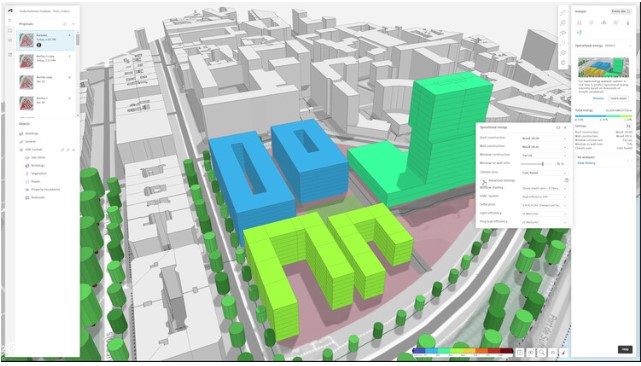
Optimizing Building Performance with AI
Imagine a world where structures not only look aesthetically pleasing but perform impeccably too. That's the reality artificial intelligence (AI) brings with its capacity for precise and data-driven analyses. AI in architecture significantly betters the performance of buildings by assimilating and interpreting vast amounts of data and generating solutions that preserve resources, reduce energy demand and ensure sustained comfort for occupants.
But you might be wondering - how exactly does AI accomplish all of these feats?
- AI-driven operational efficiency: The use of AI in architecture, coupled with sensors and smart devices, allows for the collection and interpretation of real-time data. This equips architects and engineers with the insights necessary to devise solutions for optimal operational efficiency. Automatic adjustments in lighting, temperature, or ventilation based on data, presence detection or behaviour prediction can result in significant energy savings. Moreover, early recognition of potential system failures can mitigate costs and downtime.
- AI and Predictive Maintenance. AI doesn't just react to present conditions; it's efficient at predicting future circumstances too. This comes to the fore with predictive maintenance, where AI can foresee equipment or system issues before they escalate, enabling proactive preventive care. Such analyses don't just reduce repair costs and improve system longevity, but also ensure uninterrupted comfort for the building's users.
- AI for Holistic Building Performance. AI goes beyond particular system performance and can analyse a building as a comprehensive ecosystem. Assessing building performance at this scale ensures that architects and engineers can optimise how each individual system interacts and operates with others. This leads to harmonised building behaviour that maximises energy efficiency, structural strength, and user comfort – all paramount to creating a sustainable and welcoming environment.
Picture this: you're an architect or an engineer. In the palm of your hand, you hold the power to drive performance optimisation at every level of the building lifecycle. You've got enhanced operational productivity, predictive maintenance, and holistic building performance all at your fingertips. Imagine the revolutionary designs and engineering feats you could pull off. With AI, not only is this possible, but it's also reachable and sustainable.
Unlocking Creativity through AI in Architecture
If you're contemplating the idea of integrating AI into your architectural approach, consider this: AI is not just a tool for administrative or computational tasks, but a potentially game-changing resource for unlocking creativity itself. The notion might seem alien or even intimidating at first, but it is an absolute truth you should begin comprehending right away.
AI provides a distinctive space where you can experiment and innovate without the potential risk or cost implications of physical modelling. You can play with different concepts, methodologies, and materials in a virtual environment before anything gets the green light for construction. Guided by AI, you have the freedom to push boundaries and explore uncharted territories of design and creativity.
- Creative Partner: Envision AI as a creative partner, one that broadens your perspective by offering new insights and challenging your traditional concepts. It can generate numerous design ideas in the blink of an eye, even ones you might have never considered, helping you to break away from repetitive loops and to think outside the box.
- Precision and Detail: AI's capability to handle large volumes of data with precision allows you to delve deeper into the details. It can accurately predict the implications of each design element, giving you a precise understanding of the projected outcome.
- Time Efficiency: By automating time-consuming tasks, AI gives you more time to focus on conceptualisation and design. You can spend more of your valuable hours being creative instead of diving into mundane tasks.
Remember: Embrace AI not only as an efficient tool but also as a creativity ally. Let it inspire you, challenge you, and expedite your creative thought process.
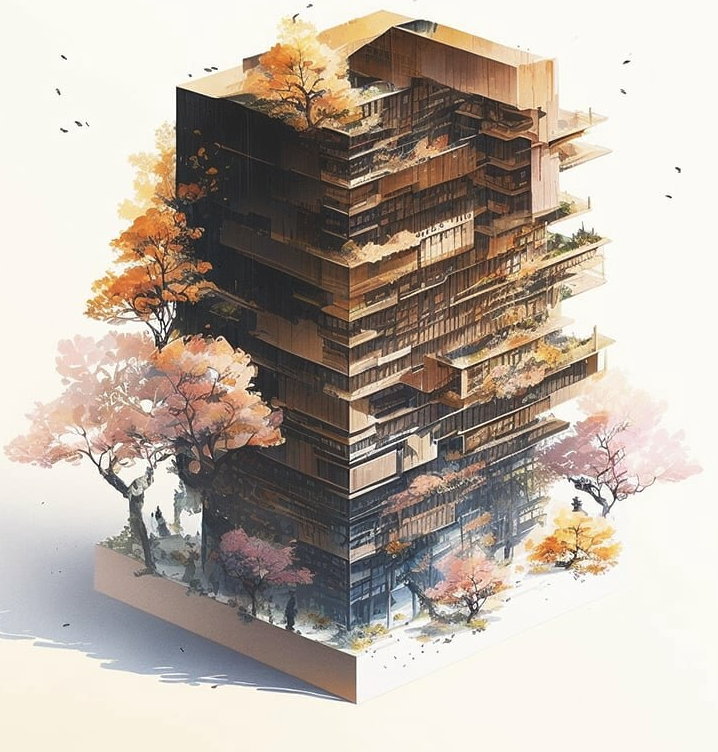
AI-Assisted Sustainable Design Solutions
As we move toward a more sustainable future, it's impossible to ignore the role that AI can play in supporting green architecture. AI-assisted sustainable design solutions aren't just a hot topic; they're an essential part of modern architecture, offering a promising pathway for architects and engineers to address environmental concerns.
These solutions leverage AI to guide architects in making eco-friendly choices throughout the design process. AI can analyse vast amounts of data, including local weather patterns, solar orientation and energy usage, to suggest design adaptations that can reduce a building's carbon footprint. But the benefits don't stop there; let's look at how embracing AI can revolutionise sustainable design.
- Data-Driven Decision Making: With AI, architects can make informed decisions right from the early design stages. Using advanced data analysis, AI can predict energy consumption and sustainability indicators under different design scenarios. AI takes the guesswork out of sustainability, providing accurate predictions that shape efficient and eco-friendly structures.
- Optimising Material Use: AI can help architects strike a balance between design aesthetics and eco-friendly material use. By analysing the energy impact of various materials, AI can recommend the most sustainable options, optimising the use of resources and reducing waste.
- Simulation and Testing: AI-enabled simulations allow architects to test their designs under various climatic conditions and tweak their designs for maximum efficiency. For example, AI can simulate how a building's design would respond to extreme weather, helping architects make design adjustments to enhance sustainability.
- Performance Monitoring: Even after construction, AI offers a means for architects to continually monitor a building's performance. This constant feedback allows for necessary modifications to ensure that the building remains energy-efficient and sustainable in the long run.
With these advantages, it's clear that AI-assisted design solutions offer a tangible means for architects and engineers to design buildings that contribute positively to our environment. Building sustainable structures isn't just about adhering to regulations, it's about architecting a better, greener future, and AI is an invaluable tool to achieve this goal.
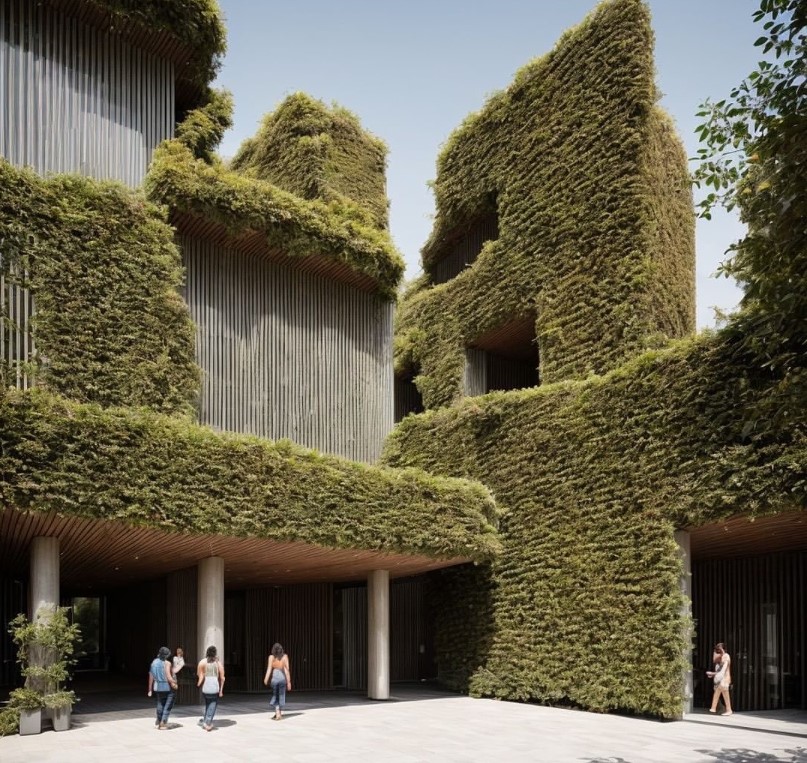
Harnessing AI for Advanced Materials Research
Just imagine, as an architect, having the ability to access a rich library of advanced materials properties and their implications on your architectural design at the click of a button. Wouldn't this be incredibly helpful? This concept might have once seemed farfetched, but now it's entirely possible, thanks to Artificial Intelligence.
The today's complex building designs demand the use of innovative and advanced materials that maintain structural integrity while adhering to sustainability goals. But how do we know which materials are best suited for a particular design or conditions? That's where AI steps in with pioneering capabilities in materials research.
- Machine learning algorithms, a subset of AI, can be employed to model the properties and performance of an extensive range of materials, including composites, novel alloys, and smart materials. We can predict how materials will perform under different conditions, such as exposure to heat, cold, or pressure, and make educated decisions about our material selection.
- AI can assist architects in identifying patterns or correlations between various factors in materials research, which a human might overlook. This could reveal new opportunities for innovation, potentially leading to the development of groundbreaking architectural materials in the future.
AI is transforming the way we examine, understand, and ultimately use materials in architecture. It's empowering architects with an unparalleled depth of insight into material science that promises to drive design innovation to new heights.
- Let’s consider a practical example of AI's potential in materials research. AI can help us explore the properties of sustainable materials like recycled plastics or bio-based materials. It might be challenging to work with these materials due to their inconsistent or unpredictable nature, which poses challenges to durability and safety. However, using AI tools and techniques to analyse and predict their behaviour can enable architects to confidently use these materials, thus contributing to sustainable design solutions.
- Also, participating in AI training will allow architects or engineers to understand and leverage this powerful tool in materials research. This does not only have the potential to significantly enhance the design approach but also establishes a competitive edge in a profession increasingly influenced by technological innovation.
In short, harnessing AI for advanced materials research adds a valuable layer of strategic insight to the design process, making it an enticing prospect for architects and engineers alike. And with each new advancement in AI, we can expect even more sophisticated and intuitive materials research capabilities in the years to come.
Improving Structural Analysis and Simulation with AI
When it comes to architectural design and engineering, the accuracy of structural analysis and simulation is paramount. Today, with the integration of AI, those involved in designing and building structures are presented with fresh opportunities to refine the precision and reliability of these critical components.
The outcome? Decision-making based on rock-solid data and predictive analysis, more efficient use of resources, and optimised overall project success. So, let's delve into how AI can play a part in enhancing structural analysis and simulation within the realm of architecture and engineering.
- Accuracy in Predictive Analysis. AI-based technologies and machine learning algorithms can learn from past data and use that information to make highly accurate predictions about future performance in structural behaviour. This includes expected changes in load, thermal conditions, or material reactions due to various environmental conditions. By feeding AI systems with data from previous projects, architects and engineers can create a repository of knowledge that continually grows and evolves, making prediction models increasingly accurate.
- Simulation Speed. Structural analysis and simulations can be time-consuming, but AI has the capacity to significantly expedite these processes. With machine learning, large volumes of data can be analysed and processed at record speed, providing real-time feedback for design changes. This leads to immense saved time, facilitating the rapid exploration of different design options and swift resolution of potential issues.
- Multi-objective Optimization. In the complex world of architecture and engineering, balancing multiple objectives can be a daunting task. Implementing AI can give rise to advanced optimisation algorithms capable of simultaneously evaluating multiple factors, including cost, sustainability, facilitate of construction, and building performance. This allows architects and engineers to identify the most effective design solutions while streamlining decision-making processes.
- Virtual Prototyping. Perhaps one of the most revolutionary aspects that AI brings to structural analysis and simulation is the concept of virtual prototyping. By creating a comprehensive digital twin of a project, architects and engineers can run simulations to test various factors – like wind loads, thermal performance, or seismic vibrations – before any physical construction begins. The in-depth insight provided by this process significantly reduces the margin of error and helps ensure the project's success.
With the assistance of AI, structural analysis and simulations become more efficient, accurate, and overall more beneficial for architects and engineers. AI is not likely to replace human expertise anytime soon – it’s really about combining human creativity and intuition with AI’s capacity for processing vast amounts of data, achieving a level of optimisation that is beyond human alone. It's a cooperative future that holds a great deal of promise for the professions.
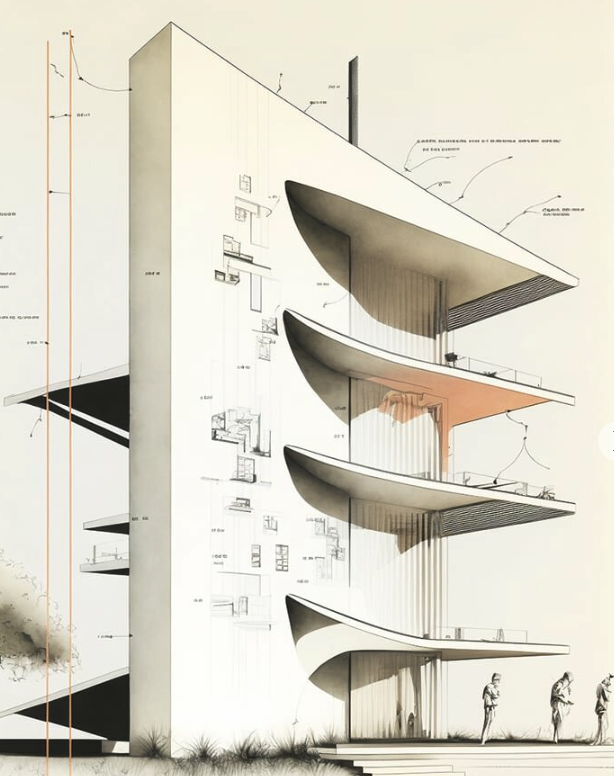
AI-Powered Risk Assessment in Architecture
If you've ever been overwhelmed by the complexities of architectural projects, especially when it comes to predicting and managing potential risks, this section is for you. One of the fascinating advancements within architectural AI is the capacity for AI-powered risk assessment. Sounds impressive, right? True to the term, this technology can significantly reduce the unpredictability of the design and construction process.
- Potentially drastic changes to the layout, timeline, cost, and overall quality of a project can be predicted and mitigated before they become a significant concern. We're sure you're asking how it works, and the answer is at once simple and profoundly transformative.
Imagine plugging in your specifications and design ideas into a system, and then let artificial intelligence do the heavy lifting. This AI system cross-references the input with a wealth of data, including historical designs, algorithms, existing blueprints, and even environmental parameters. It then identifies potential risks, efficiencies, and can even suggest adjustments to optimise the design.
Now that's a great leap forward for risk management, wouldn't you agree? This creates a smoother, more efficient, and overall more successful project execution. It enables better resource allocation, real-time responses to changes, and ultimately, more satisfied clients. So, the next time you begin a project, ask yourself how AI-powered risk assessment can ensure you stay one step ahead.
Remember: reducing the unpredictability of the architectural process isn't about controlling every single variable. It's about anticipating potential challenges and mitigating them effectively. That's what AI does best.
Embracing AI: Benefits for Architects and Designers
As we delve deeper into the era of digitisation, the line between technology and everyday life continues to blur. The field of architecture is no exception—holding hands with artificial intelligence (AI) and producing some extraordinary outcomes. This integration can be daunting for some, but embracing AI opens doors to a plethora of advantages for architects and designers.
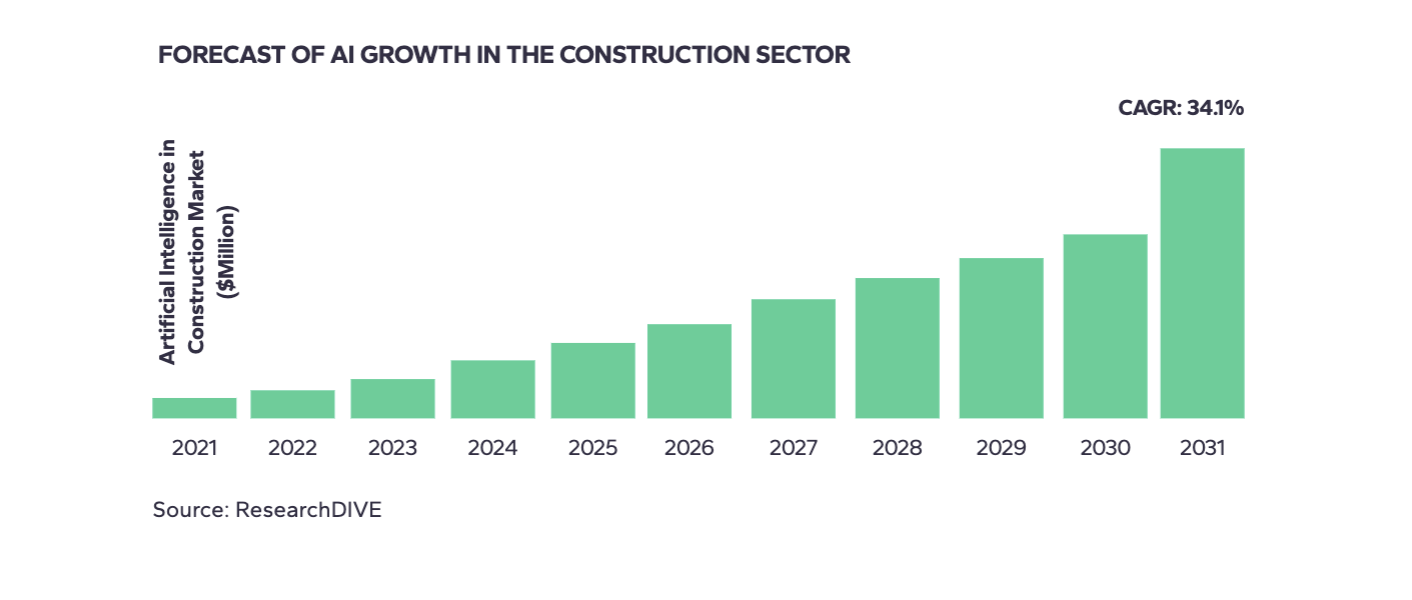
How are Zaha Hadid and other top players using AI in Architecture
Zaha Hadid and other top players in the field of architecture are increasingly using artificial intelligence (AI) to enhance their design processes. One of the key areas where AI is being employed is in generating complex and innovative architectural forms.
- For instance, Zaha Hadid Architects used AI algorithms to create the design for the Beijing Daxing International Airport. The algorithm analyzed various factors such as passenger flows, aircraft movements, and energy efficiency to generate an optimized and visually striking design. This demonstrates how AI can assist architects in developing unique and functional structures.

- Another leading architectural firm that is leveraging AI is Foster + Partners. They have been using AI algorithms to analyze large amounts of data and generate design solutions that are optimized for energy efficiency. One notable project where they have employed AI is the Bloomberg European Headquarters in London. AI was used to analyze various environmental factors, such as solar exposure and wind patterns, to inform the building's form and orientation. This allowed for the creation of a sustainable and energy-efficient design that seamlessly integrates with its surroundings.
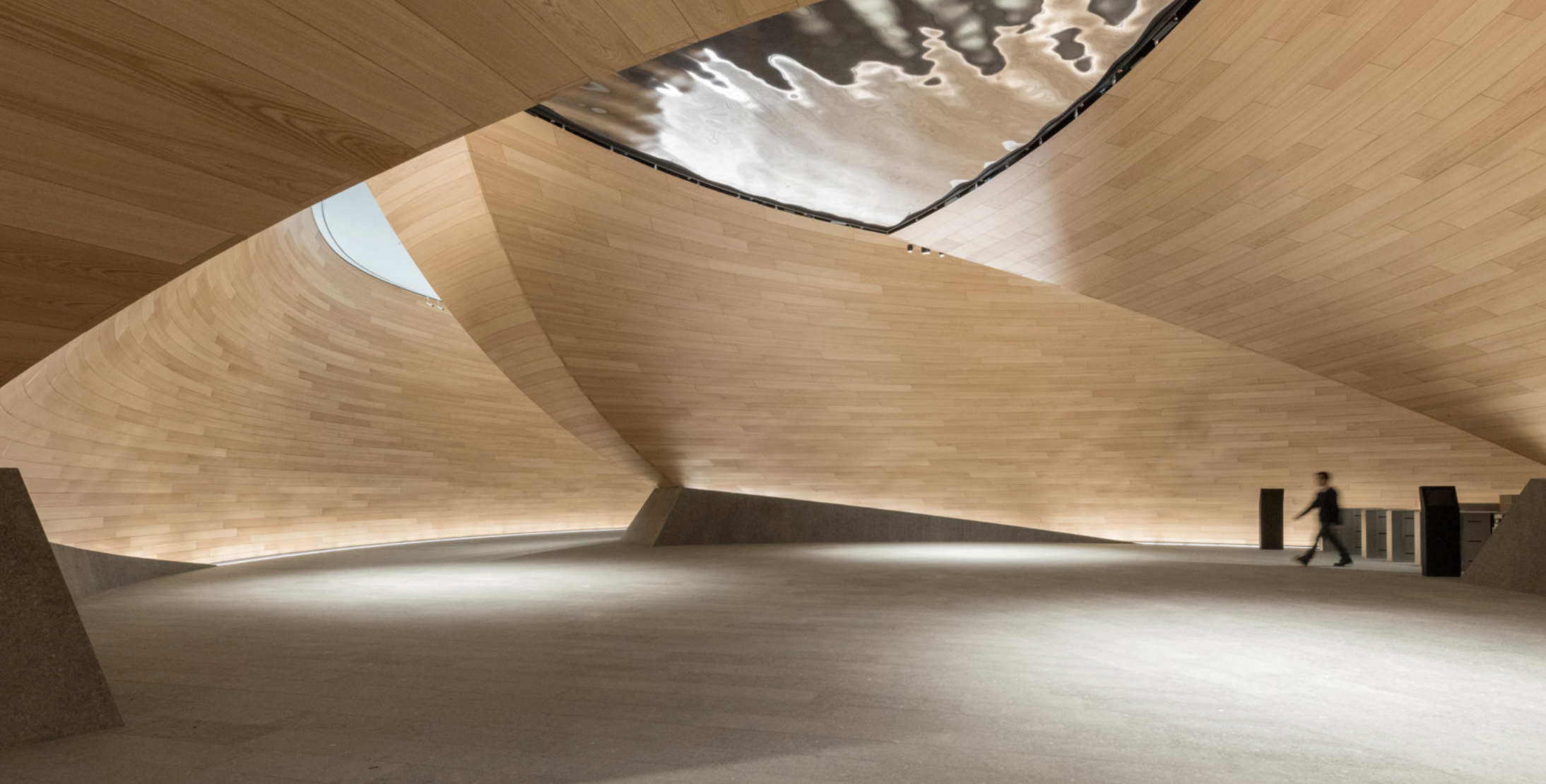
- A third architectural firm that is embracing AI in their processes is Bjarke Ingels Group (BIG). They have been using AI to enhance their design exploration and decision-making processes. One specific project where they have utilized AI is the Amager Bakke Waste-to-Energy Plant in Copenhagen. AI algorithms were employed to analyze various design options and optimize the building's form for maximum energy production. This resulted in a unique and visually striking design that not only serves as a waste-to-energy plant but also as a recreational space for the community.
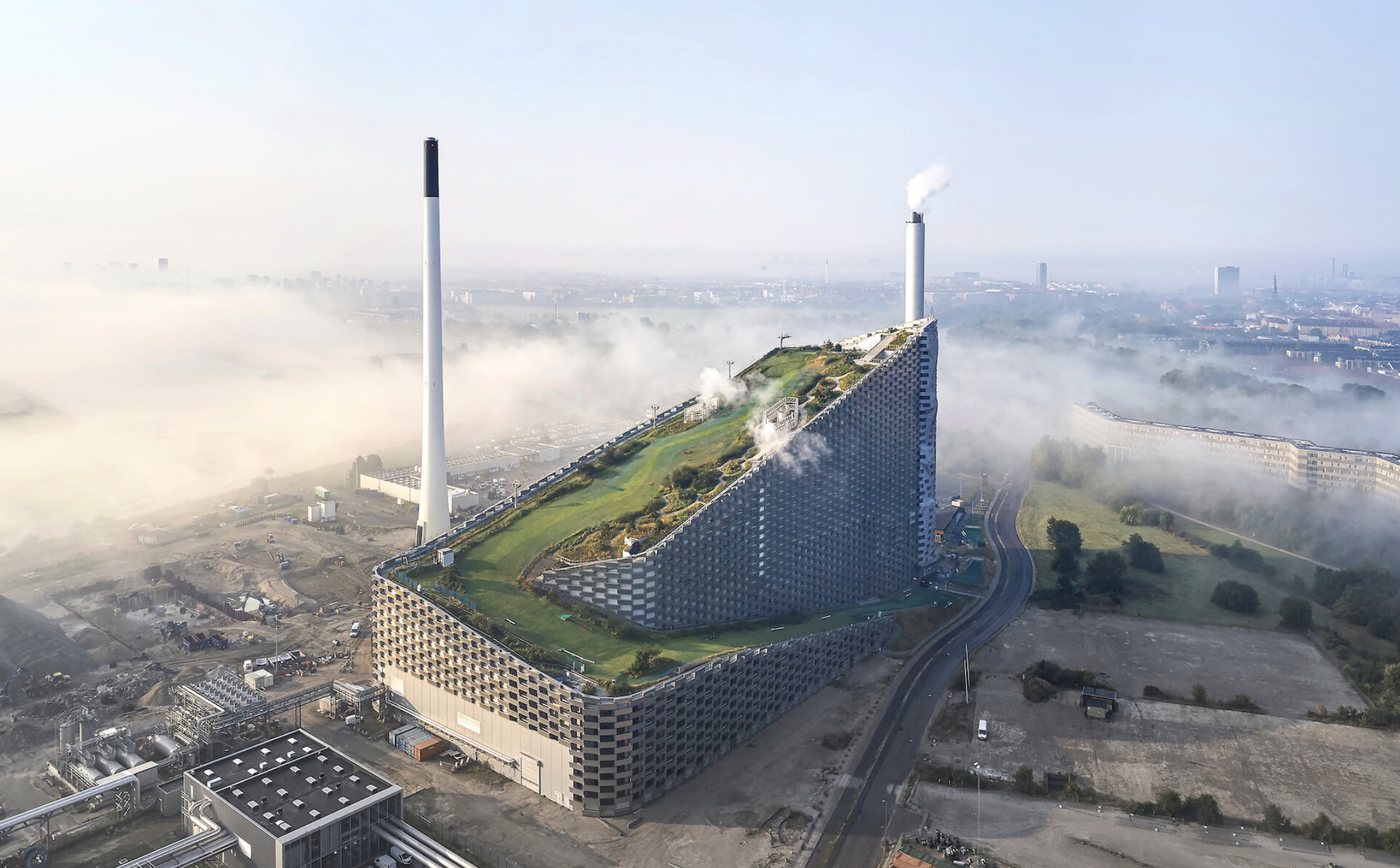
Gaining a Competitive Edge through AI Training: Stats that matter
The field of architecture is rapidly embracing artificial intelligence (AI), and the results are increasingly impressive. Let's examine some compelling statistics to illustrate how AI can provide architects and designers with a competitive edge.
- 30% increase in efficiency: Several studies indicate that AI tools can lead to efficiency boosts of up to 30% in the design process, saving architects precious time and resources.
- 50% reduction in planning errors: AI-powered design software can help reduce planning errors by half, leading to reduced costs and schedule overruns.
- 35% saving in energy costs: AI-driven energy modelling tools allow architects to create more sustainable, energy-efficient designs. This can lead to a 35% reduction in energy costs over the life of a building.
- 40% less construction waste: AI can help in creating precise digital models for construction, leading to significant reduction in waste - as much as 40% less in some instances.
- 60% faster project delivery: Leveraging AI in project management processes can result in up to 60% quicker project delivery, improving both profitability and client satisfaction.
Sources:
- "The Future of AI and Architecture", Architect Magazine.
- "How is AI influencing the future of Architecture?", BuiltWorlds.
Why Now is the Best Time to Start Studying AI in Architecture
There's no better time than the present to embrace change, and in the field of architecture, that means starting to explore how Artificial Intelligence (AI) can bring substantial benefits to your design process. As we tread further into the exciting and unchartered territories of the 21st-century, the role of AI in transforming industries around us grows more significant by the day. This, coupled with the increased global focus on designing with sustainability in mind, makes it the perfect time to start learning about AI in architecture.
AI's capabilities have only just begun to make their mark in the architectural sphere. With technologies becoming more readily accessible and advancements being made at an astounding pace, it's important not just to keep up, but to stay ahead. This is especially true today when the architectural landscape is highly competitive.
If you're not already on the AI train, you'll want to hop on board quick sharp. Because one thing's certain — it's moving fast.
AI is not going away, and its influence on architecture will only become stronger. Think about it. As tasks become more complex, wouldn't it be advantageous to have a tool that could not only execute those tasks faster but also give you highly optimized results?
Take the leap: Master’s in Artificial Intelligence for Architecture & Construction
Ready to take your architectural or design career to the next level? Are you looking for training opportunities in artificial intelligence for architects and designers? Our Master’s in Artificial Intelligence for Architecture & Construction offers an unrivalled opportunity to delve into AI's transformative power. This hands-on programme is where the theoretical meets practical, equipping you with skills and knowledge necessary to shape the future of architectural design.
But more than a programme, it’s a unique experience, led by active professionals on the cutting edge. Learn from German Otto Bodenbender, Design Technology Manager at BIG, renowned for implementing AI in design optimisation. Additionally, Oana Taut, Chief Product Officer at Infrared.City, brings her expertise in applying AI in the field of sustainable design. And Thomas Takeuchi, Co-Founder & CEO at Arqgen, uncovers the power of generative design to significantly reduce the time it takes to develop complex projects.
Tech is reshaping architecture right now, and those adopting this innovation will be at the forefront, reaping numerous competitive advantages. Harness the power of AI today, redefine the possibilities of tomorrow. It's time to take the leap. Enrol in the Master’s in Artificial Intelligence for Architecture & Construction and be a part of this transformation.


